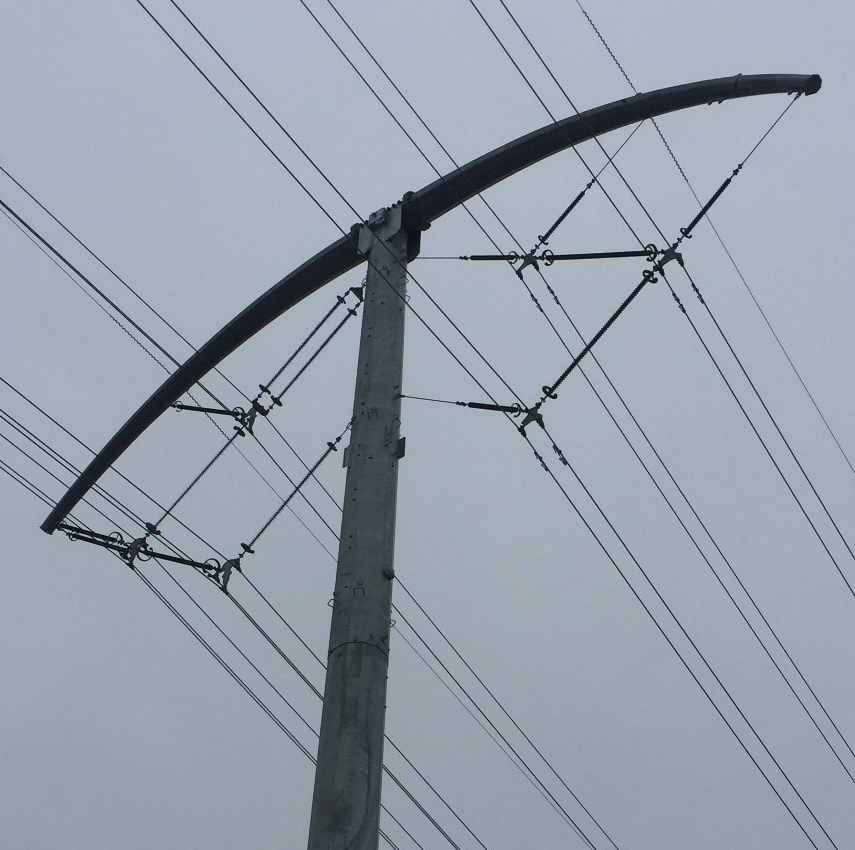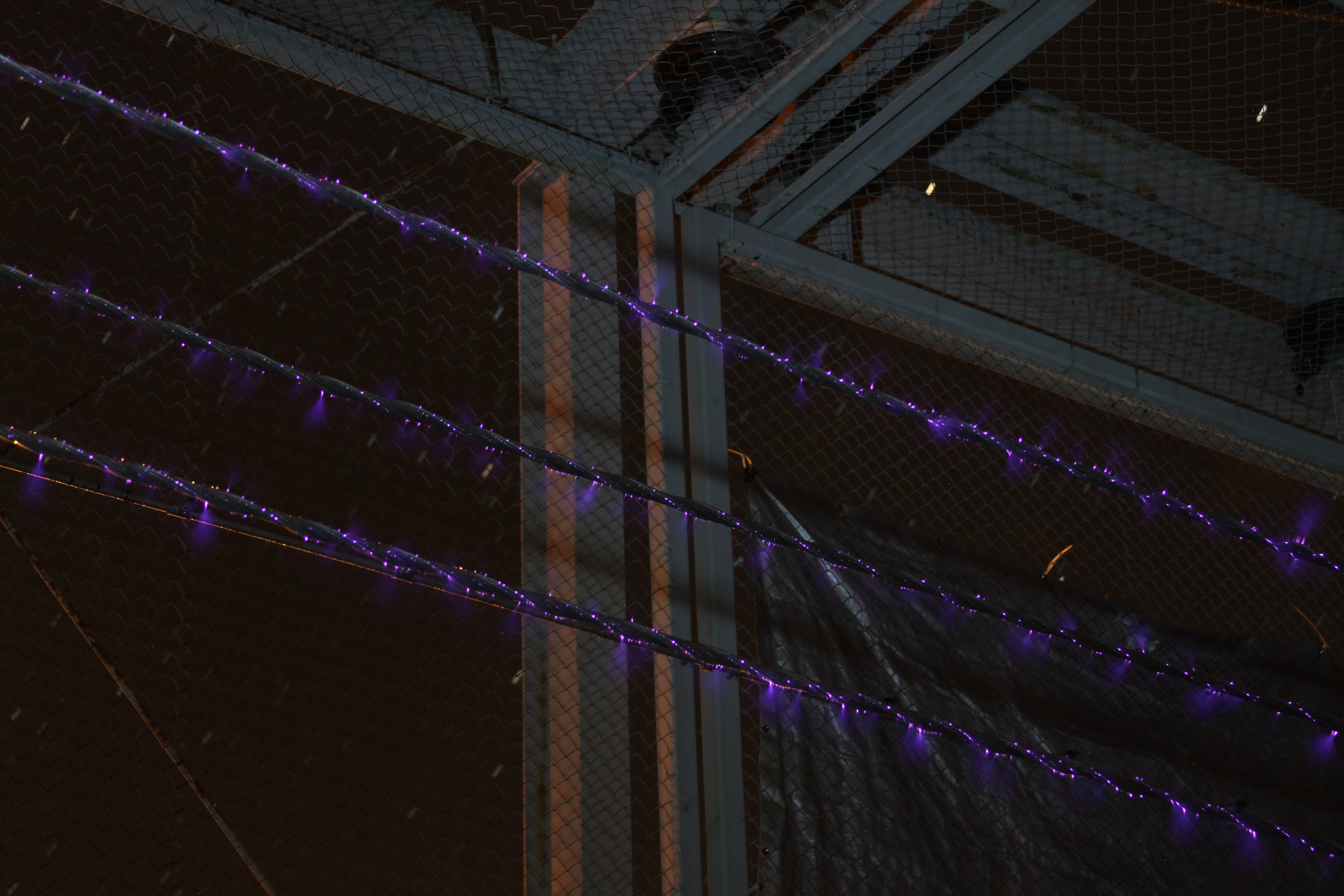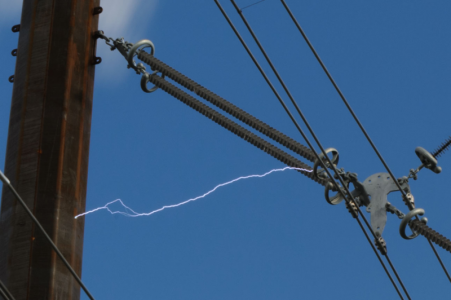EPRI Tests Help Prepare AEP’s New Power Line Technology for Commercial Deployment
With testing support from EPRI, American Electric Power (AEP) has developed a transmission line technology known as Breakthrough Overhead Line Design (BOLD®). Relative to conventional 345-kilovolt power lines, BOLD provides up to 60% greater power-carrying capacity, lowers line losses by as much as 33%, and reduces structure height by up to 30%. In 2016, AEP completed the first line in Indiana using the technology.
BOLD lines are more compact than conventional lines. The configuration eliminates the large metal pieces typically positioned between the line’s three phases so that the phases can be closer together, increasing power-carrying capacity, mitigating the intensity of electric and magnetic fields, and reducing construction costs. BOLD lines can transfer more power over long distances without relying on series capacitors and other expensive equipment to increase line voltage.

According to Andrew Phillips, EPRI’s director of transmission, distribution, and substations, public acceptance helps drive the need for BOLD’s smaller structure. “People want power lines to be invisible,” he said. “This compact, aesthetically pleasing design may look much better than larger structures and may also require a smaller right-of-way. Public acceptance can lower costs by speeding approval of construction.”
Utilities develop transmission line designs to balance various considerations, such as narrow rights-of-way, public acceptance, ease of maintenance for energized lines, construction costs, and electric and magnetic fields on the ground.
At EPRI’s High-Voltage Test Laboratory in Lenox, Massachusetts, researchers conducted tests to help AEP optimize BOLD’s design and confirm acceptable performance. “A compact configuration could potentially lead to technical problems such as flashovers during lightning and excessive noise,” said Phillips. “Our tests looked at these issues.”
In traditional power lines, flashovers usually occur from the energized conductor to metal sections of the structure between conductors. BOLD has insulators instead of metal sections between conductors, so flashovers could occur from one energized conductor to another. The tests showed that BOLD can withstand an acceptable level of surges and lightning, while minimizing flashovers.
Another test looked at noise that results from coronas—electrical discharges that can occur when the line’s electric field ionizes the surrounding air. EPRI and AEP determined that BOLD’s line noise was within acceptable limits. The team optimized the configuration to limit coronas to help prevent degradation of the polymer insulators.
“EPRI’s Lenox lab is the only one that can do this type of testing,” said Phillips. “Because the line is not a traditional design, we can’t use standard tests. Our experts spent several years designing tests and equipment appropriate for the BOLD design to verify its performance and offer suggestions for refining the design.”
Researchers used an EPRI-designed suite of radio frequency sensors to monitor various aspects of the first generation of in-service BOLD lines, including electrical performance, structure loading, and motion. AEP and EPRI deployed the sensors on the new Indiana line in late 2016 and plan to monitor performance for two years. For 2018, EPRI has slated additional tests at two BOLD lines at lower voltages (230 and 161 kilovolts).
Key EPRI Technical Experts:
Andrew Phillips, Ray Ferraro








